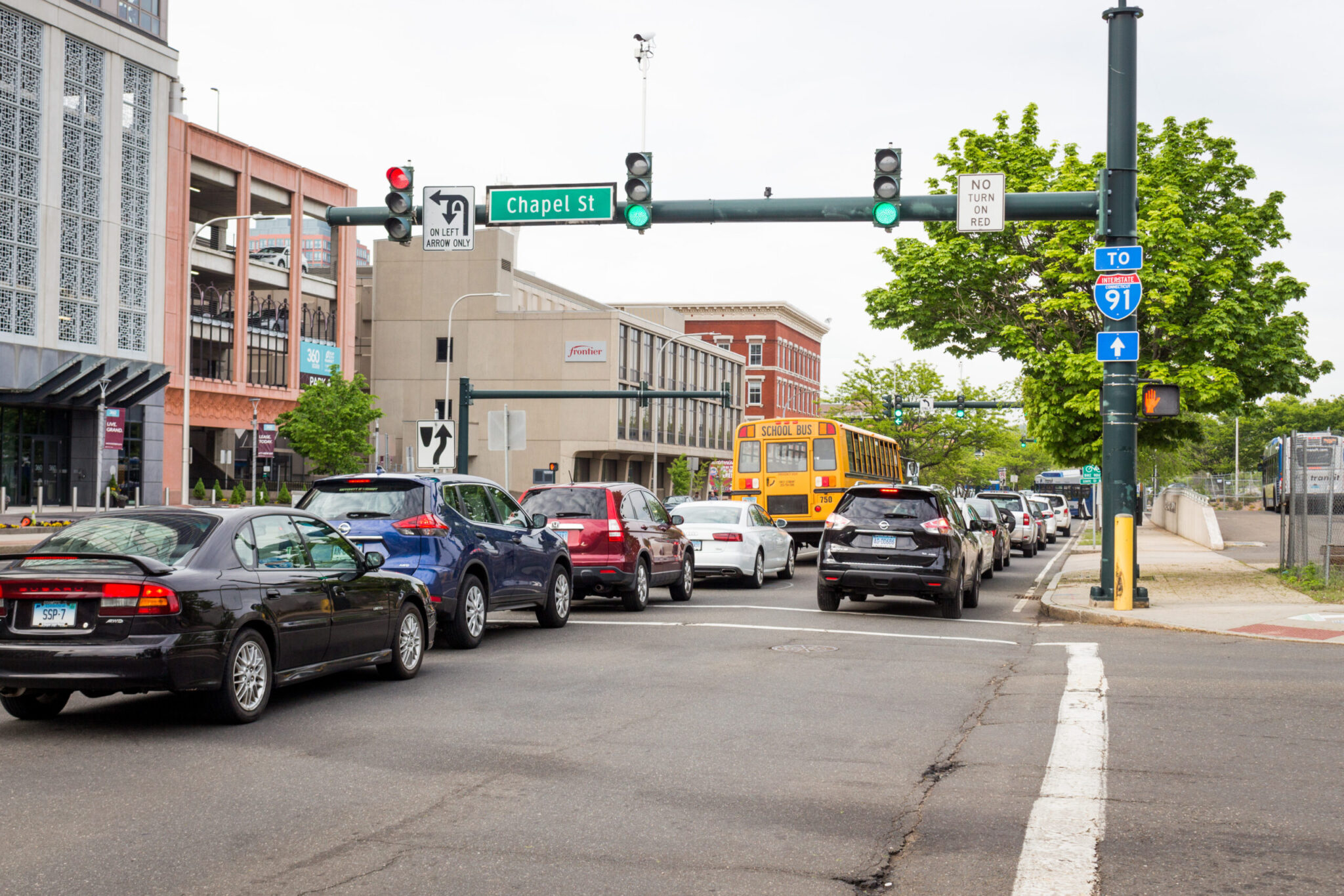Connecticut allows implementation of automated cameras to combat traffic accidents
House Bill 5917, which allows for the installation of automated traffic cameras across the state, went into effect on Sunday; New Haven, however, is still months away from getting cameras.

Daniel Zhao, Contributing Photographer
Connecticut municipalities now have the option to install automated stoplight and speed cameras at local intersections with House Bill 5917, which went into effect on Sunday.
Connecticut Governor Ned Lamont signed the bill into law on June 27. Among other safety-focused transportation guidelines, the law allows municipalities to install automated cameras in roadways. The cameras will photograph the license plates of vehicles that violate traffic rules and automatically mail citations to the vehicle’s owner.
Josh Morgan, spokesperson for the Connecticut Department of Transportation, spoke about what he views as the benefit of automated cameras on public safety in Connecticut.
“We provided a significant amount of evidence from other states,” Morgan said, “and other studies from the federal government to show the effectiveness that these devices have in terms of reducing speeding, reducing red light running and ultimately reducing crashes and saving people’s lives.”
The use of automated cameras was proposed by the Vision Zero Council, a work group formed across several state agencies tasked with developing policy to reduce transportation-related fatalities, in light of an increase in traffic accidents throughout Connecticut.
According to Sandeep Aysola, Director of New Haven Transportation, Traffic & Parking Committee, speeding and intersection red light running violations have become issues of serious concern. He provided data from the the UConn Connecticut Traffic Data Repository and stressed the disproportionate impact of these accidents on pedestrians and bicyclists.
Aysola told the News that there were more than 19,000 crashes in New Haven, including 635 bicyclist-related crashes and 462 pedestrian-related crashes all in less than a three-year period from January 2020 through December 2022. Of these, according to Aysola, there were 53 fatal crashes and 259 serious injury crashes.
The bill is an “opt-in” and not a mandate, according to Morgan. While municipalities across the state are not required to install the cameras, the Connecticut DOT will provide guidance to Connecticut towns and cities by Jan. 1, 2024 to aid them in deciding whether and how to implement the cameras. According to Morgan, the automated traffic cameras will likely make their first appearance on Connecticut roadways early next year.
For New Haven to implement an automated enforcement program under the guidelines of the bill, the city’s proposal would need to be discussed in a public hearing, then passed by the Board of Alders, according to the bill.
The proposal, if approved by the governing body, will then go before the Connecticut Department of Transportation, which has 60 days to respond to the municipality and accept or reject the proposal. The local government must provide funding for the implementation, monitoring and maintenance of automated traffic lights.
Morgan emphasized the importance of learning from other states’ mistakes in the installation of automatic traffic regulation systems, without disproportionately impacting low-incomes communities and communities of color. He mentioned Connecticut’s history of highway construction which disproportionately impacted communities of color.
In the past, automated cameras have been used predominantly in Black and Brown neighborhoods and low-income areas, Morgan said.
“It could be used as a political tool in terms of ‘Mayor X doesn’t like their opposing candidate, so they’re going to put these all around their neighborhood’ or vice versa,” he added. “Eliminating that from the equation is so incredibly important.”
The bill specifies that it seeks to “prevent the emergence and persistence of foreseeable future patterns of discrimination or disparities of race, ethnicity and socioeconomic status,” and includes socioeconomic measures as considerations in determining the location of automated cameras.
Morgan said that the cameras will be placed in locations identified through data collection as having been frequent sites of traffic accidents in the past. The cameras will also be installed for three-year time periods, after which the department will reassess whether the camera reduced the frequency of accidents.
Aysola wrote that he applauded the state government on passing the bill and believes that its outcome will be successful in reducing transportation-related harms.
“[New Haven] is looking forward to working with the Residents, Community Groups, the Board of Alders and other important stakeholders in implementing initiatives such as the installation of Speed enforcement and Red-light running cameras, creation of Pedestrian Safety and School zones and other traffic safety programs,” he wrote.
Lior Tressman, who is involved with the Safe Streets Coalition of New Haven — an organization that advocates for the elimination of traffic fatalities — said that he believes there is public support in New Haven for installing the cameras.
For Tressman and Safe Streets New Haven, the next step in reducing traffic accidents through automated technology comes in implementation within specific cities and towns.
“New Haven representatives, advocates and elected officials have been pushing through automated enforcement at the statewide level for over a decade,” Tressman said. “There are certainly many, many locations [in New Haven] that would be appropriate for red light cameras and speed cameras.”
The Connecticut General Assembly’s 2023 legislative session ended on June 7.







